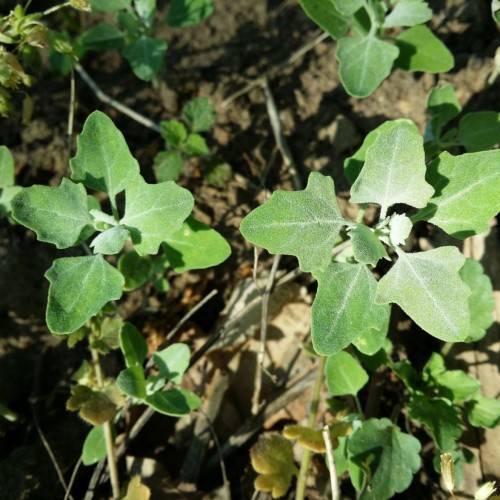
Seaport Goosefoot
Chenopodium opulifolium
Watering:
Minimal
Hardiness Zone:
Sun:
full sun,part shade
Fruits:
Fruits Ready In Fall
Edible:
Yes
Leaf:
Yes
Growth Rate:
Low
Drought Tolerant:
Yes
Salt Tolerant:
Yes
Care Level:
Medium
watering
Narrowleaf Goosefoot (Chenopodium leptophyllum) should be watered deeply but infrequently. During the growing season, water the plant once a week at its base, allowing the top 2 to 3 inches of soil to remain dry before watering again. This will ensure that the roots of the plant have access to plenty of moisture and nutrients, while helping to prevent overwatering. During the winter when the plant is dormant, reduce the amount of watering as needed.
sunlight
Narrowleaf Goosefoot (Chenopodium leptophyllum) is an annual plant which typically thrives in sunny, open habitats and prefers an average of 6 to 8 hours of direct sunlight per day. The sunlight should be during the peak hours of the day and preferably during the morning when the sunlight is the strongest. During the winter months, it is best that the sunlight is direct and strong since it can help warm the soil and plant during the cooler months. During the summer months, the plant prefers dappled sunlight throughout the day instead of direct sunlight all at once, as the intense heat may cause it to wilt.
pruning
Narrowleaf Goosefoot (Chenopodium leptophyllum) should be pruned once every 1-2 years. Pruning should be done just after flowering, during or shortly after the plants’ seed heads have started to turn brown. Pruning should be done to keep the plant contained and promote new growth. To do this, cut back the main stems to around 2-3 inches in height. You can also trim away any old, damaged, or diseased foliage from the stem. This will encourage new foliage to emerge and help keep the plant healthy.
